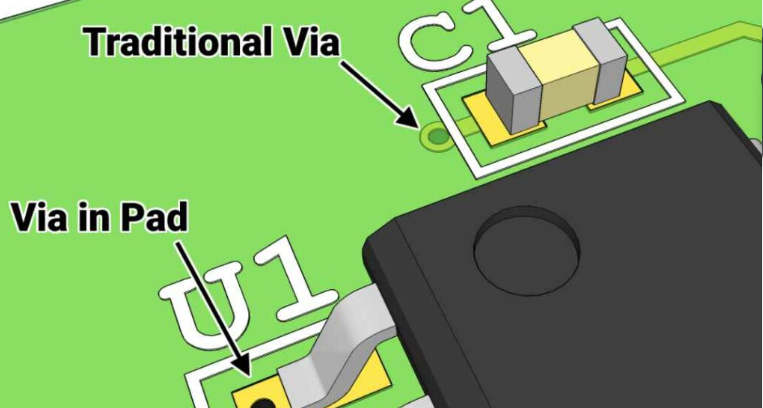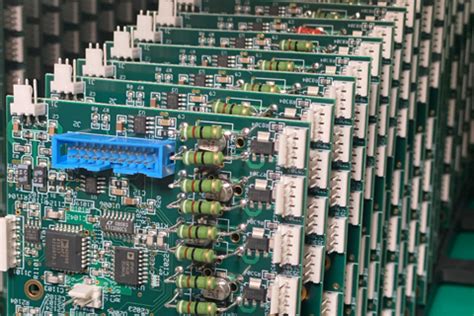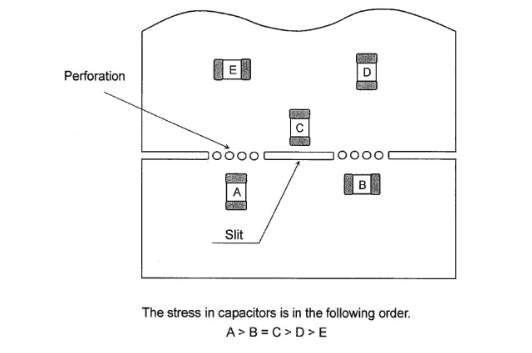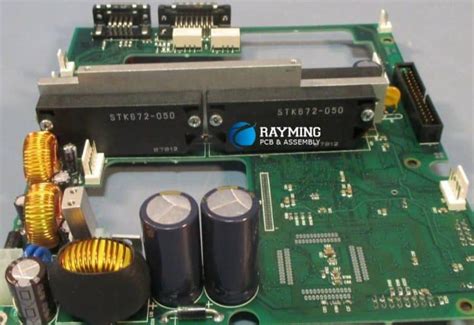What metals are in circuit boards
Common Metals Found In Circuit Boards
Circuit boards, the backbone of modern electronic devices, are composed of a variety of metals that contribute to their functionality and durability. Understanding the common metals found in circuit boards is essential for comprehending their role in the electronics industry.
Among the most prevalent metals are copper, tin, lead, gold, silver, and nickel, each serving a distinct purpose in the intricate design of these components.
Copper is perhaps the most ubiquitous metal in circuit boards, primarily due to its excellent electrical conductivity.
It forms the conductive pathways, or traces, that connect different components on the board. These traces are crucial for the transmission of electrical signals, ensuring that the device operates efficiently. Additionally, copper’s thermal conductivity helps in dissipating heat generated by electronic components, thereby enhancing the overall reliability of the circuit board.
Tin is another common metal found in circuit boards, often used in combination with lead to create solder.
Solder is a fusible metal alloy that melts at a relatively low temperature, allowing it to bond electronic components to the circuit board without damaging them. The tin-lead solder has been a standard in the industry for many years due to its ease of use and reliable performance. However, due to environmental and health concerns associated with lead, there has been a significant shift towards lead-free solders, which typically contain a higher percentage of tin along with other metals such as silver and copper.
Gold, though used in smaller quantities, plays a critical role in circuit boards.
Its primary application is in the plating of connector pins and contact points. Gold’s excellent corrosion resistance and superior conductivity make it ideal for ensuring reliable connections over the lifespan of the device. Despite its high cost, the benefits of using gold in critical areas justify its inclusion in circuit board manufacturing.
Silver, known for its exceptional electrical conductivity, is also found in circuit boards, albeit in smaller amounts compared to copper.
It is often used in conductive inks and pastes for creating fine conductive traces in specialized applications. Silver’s high conductivity ensures minimal signal loss, which is particularly important in high-frequency and high-speed electronic devices.
Nickel is another metal commonly used in circuit boards, primarily as a barrier layer in the plating process.
It is often applied beneath gold or other precious metals to prevent diffusion and ensure a stable, long-lasting connection. Nickel’s hardness and resistance to oxidation make it an excellent choice for this purpose, contributing to the overall durability of the circuit board.
In addition to these primary metals, circuit boards may also contain small amounts of other metals such as palladium, platinum, and aluminum. Palladium and platinum are often used in multilayer ceramic capacitors and other specialized components due to their stability and conductive properties. Aluminum, on the other hand, is commonly used in heat sinks and other thermal management solutions to dissipate heat away from critical components.
In conclusion, the common metals found in circuit boards each play a vital role in ensuring the functionality, reliability, and longevity of electronic devices. From the conductive pathways formed by copper to the corrosion-resistant connections provided by gold, these metals are integral to the performance of modern electronics. As technology continues to evolve, the composition and application of these metals may also change, driven by advancements in materials science and the ongoing pursuit of more efficient and sustainable manufacturing practices.

The Role Of Copper In Circuit Boards
Copper plays a pivotal role in the functionality and efficiency of circuit boards, serving as the primary conductive material that facilitates the flow of electrical signals. Its exceptional electrical conductivity, second only to silver, makes it an ideal choice for this application. The use of copper in circuit boards is not merely a matter of tradition but a necessity driven by its unique properties that ensure the reliability and performance of electronic devices.
One of the primary reasons copper is favored in circuit boards is its ability to conduct electricity with minimal resistance.
This low resistivity is crucial for maintaining the integrity of electrical signals as they traverse the intricate pathways of a circuit board. In addition to its excellent conductivity, copper is also highly ductile, allowing it to be drawn into thin wires or etched into fine patterns without breaking. This malleability is essential for creating the complex and densely packed circuits found in modern electronic devices.
Moreover, copper’s thermal conductivity is another significant advantage.
As electronic components generate heat during operation, efficient heat dissipation becomes critical to prevent overheating and ensure the longevity of the device. Copper’s ability to conduct heat away from sensitive components helps maintain optimal operating temperatures, thereby enhancing the overall reliability and lifespan of the circuit board.
In the manufacturing process, copper is typically applied to circuit boards through a method known as electroplating.
This process involves depositing a thin layer of copper onto a substrate, usually made of fiberglass or another insulating material. The copper layer is then patterned using photolithography and etching techniques to create the desired circuit pathways. This precision in patterning is vital for the proper functioning of the circuit board, as even minor deviations can lead to signal loss or interference.
Furthermore, copper’s resistance to corrosion is another factor that contributes to its widespread use in circuit boards.
While copper can oxidize when exposed to air, forming a layer of copper oxide, this layer is relatively stable and does not significantly impede its electrical conductivity. To enhance its durability, copper surfaces on circuit boards are often coated with protective layers such as tin, gold, or solder mask, which further prevent oxidation and mechanical wear.
The role of copper in circuit boards extends beyond just the conductive pathways.
It is also used in the formation of vias, which are small holes that allow electrical connections between different layers of a multi-layer circuit board. These vias are typically plated with copper to ensure a reliable and conductive connection, enabling the complex interconnections required in advanced electronic devices.
In addition to its technical advantages, the economic aspect of copper also plays a role in its prevalence in circuit boards.
While not as expensive as precious metals like gold or silver, copper offers a cost-effective solution that balances performance and affordability. This economic feasibility ensures that copper remains the material of choice for a wide range of electronic applications, from consumer electronics to industrial machinery.
In conclusion, copper’s exceptional electrical and thermal conductivity, combined with its ductility, corrosion resistance, and economic viability, make it an indispensable material in the construction of circuit boards. Its role is fundamental to the performance, reliability, and longevity of electronic devices, underscoring the importance of copper in the ever-evolving landscape of technology.
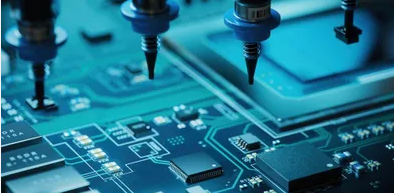
Precious Metals Used In Circuit Board Manufacturing
Circuit boards, the backbone of modern electronic devices, are composed of various materials, including a range of precious metals that play crucial roles in their functionality. These metals are selected for their unique properties, such as conductivity, resistance to corrosion, and durability, which are essential for the efficient operation of electronic circuits. Among the most commonly used precious metals in circuit board manufacturing are gold, silver, and palladium.
Gold is perhaps the most well-known precious metal used in circuit boards.
Its excellent conductivity and resistance to tarnish make it an ideal choice for critical components such as connectors, switch contacts, and relay contacts. Gold’s ability to maintain its conductivity over time, even in harsh environments, ensures the reliability and longevity of electronic devices. Additionally, gold’s malleability allows it to be used in very thin layers, which is particularly advantageous in the miniaturization of electronic components.
Silver, another precious metal frequently used in circuit boards, is renowned for its superior electrical and thermal conductivity.
It is often employed in the form of silver paste or silver ink for creating conductive paths on circuit boards. Silver’s high conductivity ensures efficient signal transmission and minimal energy loss, which is vital for the performance of high-speed electronic devices. However, silver is more prone to oxidation than gold, which can affect its long-term reliability. To mitigate this, silver is often alloyed with other metals or coated with protective layers.
Palladium, a member of the platinum group of metals, is also utilized in circuit board manufacturing due to its excellent conductivity and resistance to corrosion.
Palladium is commonly used in multilayer ceramic capacitors (MLCCs), which are essential components in modern electronic devices.
These capacitors rely on palladium’s stability and reliability to function effectively in various applications, from consumer electronics to automotive systems. Palladium’s ability to withstand high temperatures and its compatibility with other materials make it a valuable asset in the production of durable and efficient electronic components.
In addition to these primary precious metals, other elements such as platinum and rhodium are occasionally used in specialized applications.
Platinum, for instance, is employed in certain high-reliability connectors and contacts due to its exceptional resistance to corrosion and wear. Rhodium, known for its hardness and reflective properties, is sometimes used as a coating to enhance the durability and performance of specific components.
The use of precious metals in circuit board manufacturing is not only driven by their functional properties but also by economic considerations.
The high value of these metals necessitates efficient recovery and recycling processes to minimize waste and reduce costs. Recycling precious metals from electronic waste has become an important industry, contributing to the sustainability of electronic manufacturing and reducing the environmental impact of mining and refining new materials.
In conclusion, the incorporation of precious metals such as gold, silver, and palladium in circuit board manufacturing is essential for the performance, reliability, and longevity of electronic devices. These metals provide the necessary conductivity, resistance to corrosion, and durability required for modern electronics to function effectively. As technology continues to advance, the demand for these precious metals will likely persist, underscoring the importance of efficient recycling and sustainable practices in the electronics industry.

Environmental Impact Of Metals In Circuit Boards
Circuit boards, the backbone of modern electronic devices, contain a variety of metals that are essential for their functionality. These metals, while crucial for the performance and reliability of electronic components, pose significant environmental challenges when it comes to disposal and recycling. Understanding the environmental impact of these metals is critical for developing sustainable practices in the electronics industry.
One of the primary metals found in circuit boards is copper.
Copper is used extensively for its excellent electrical conductivity, making it ideal for creating pathways that connect different components on the board. However, the extraction and processing of copper can lead to substantial environmental degradation. Mining activities often result in habitat destruction, soil erosion, and water pollution due to the release of toxic substances. Additionally, the smelting process emits sulfur dioxide, contributing to acid rain and air pollution.
Another metal commonly found in circuit boards is gold.
Gold is prized for its superior conductivity and resistance to corrosion, which ensures the longevity and reliability of electronic connections. Despite its benefits, gold mining is associated with severe environmental consequences. The use of cyanide in gold extraction poses a significant risk to water sources, as cyanide spills can lead to the contamination of rivers and groundwater. Furthermore, gold mining generates large amounts of waste rock and tailings, which can contain harmful heavy metals and chemicals.
Lead is also present in many circuit boards, primarily in the form of solder, which is used to join components together.
Lead is highly toxic and poses serious health risks to humans and wildlife. When electronic waste is improperly disposed of, lead can leach into the soil and water, leading to contamination. This can have detrimental effects on ecosystems and human health, including neurological damage and developmental issues in children.
Tin, often used in combination with lead in solder, is another metal of concern.
While tin itself is less toxic than lead, its extraction and processing can still have negative environmental impacts. Tin mining often involves the destruction of tropical forests and the displacement of local communities. Additionally, the refining process can produce harmful byproducts that contaminate water and soil.
Silver, used in small quantities in circuit boards for its conductive properties, also presents environmental challenges.
Silver mining and refining can lead to the release of toxic substances such as mercury and cyanide, which can contaminate water sources and harm aquatic life. The environmental footprint of silver is further compounded by the energy-intensive nature of its extraction and processing.
Nickel, another metal found in circuit boards, is used for its corrosion resistance and durability.
However, nickel mining and refining can result in significant environmental damage. The process often involves the release of sulfur dioxide and other pollutants, contributing to air and water pollution. Additionally, nickel mining can lead to deforestation and habitat loss, impacting biodiversity.
Given the environmental impact of these metals, it is imperative to adopt sustainable practices in the electronics industry.
Recycling and proper disposal of electronic waste can mitigate some of the negative effects. By recovering valuable metals from discarded electronics, we can reduce the need for new mining activities and minimize environmental degradation. Furthermore, advancements in technology and materials science may lead to the development of alternative materials that are less harmful to the environment.
In conclusion, while the metals in circuit boards are essential for the functionality of electronic devices, their environmental impact cannot be overlooked. Sustainable practices, including recycling and the development of eco-friendly materials, are crucial for minimizing the ecological footprint of the electronics industry. By addressing these challenges, we can work towards a more sustainable and environmentally responsible future..

